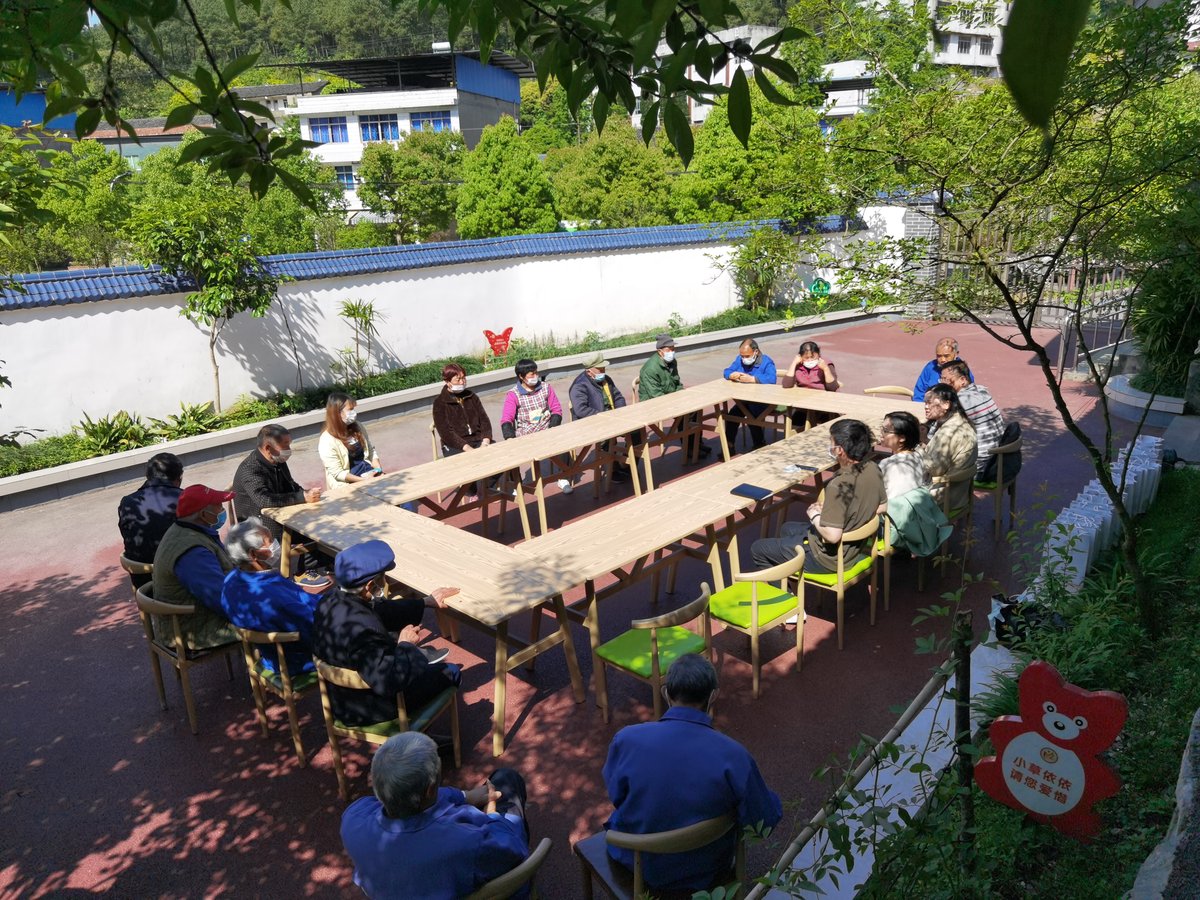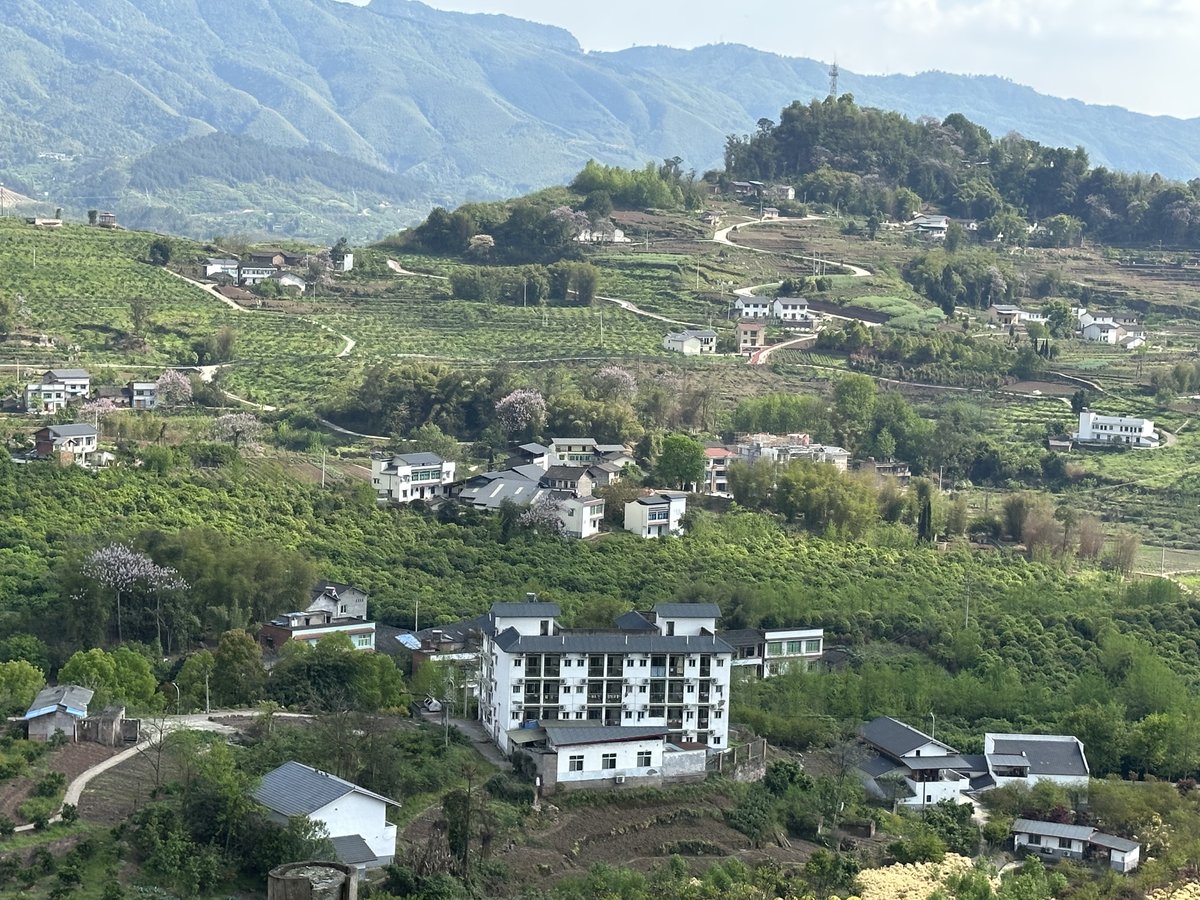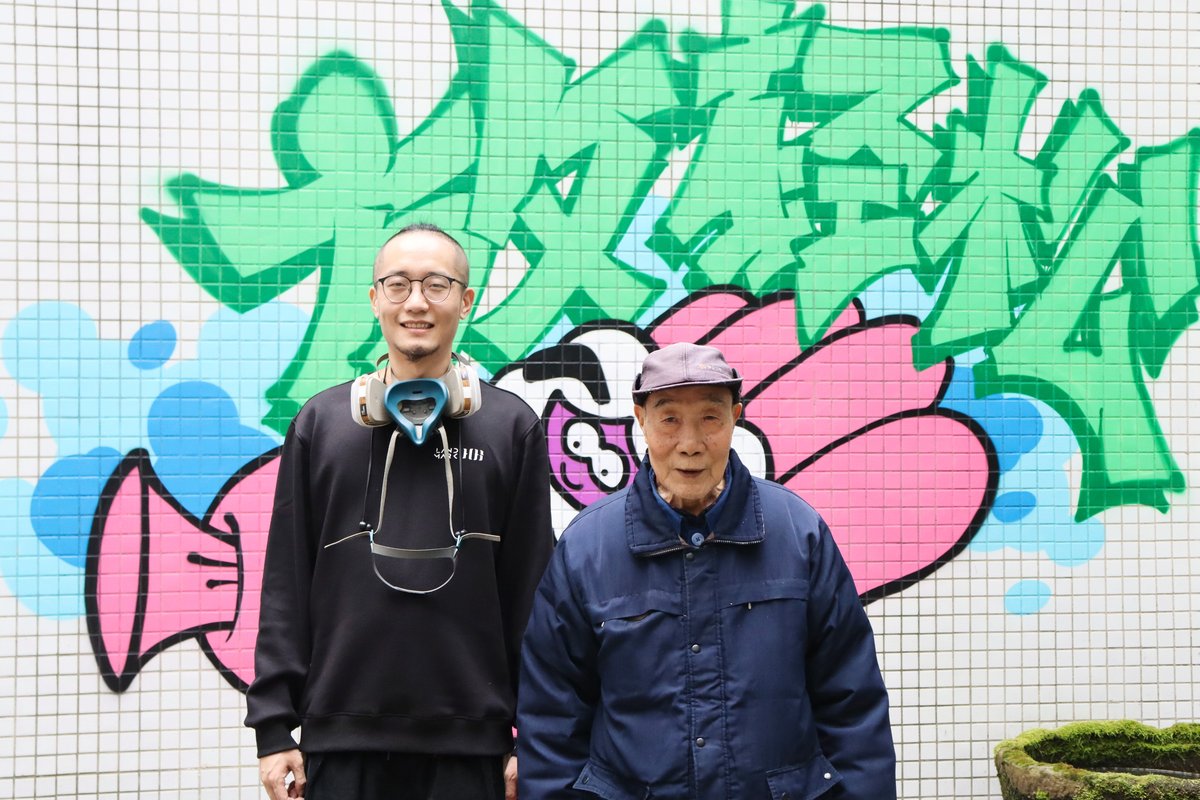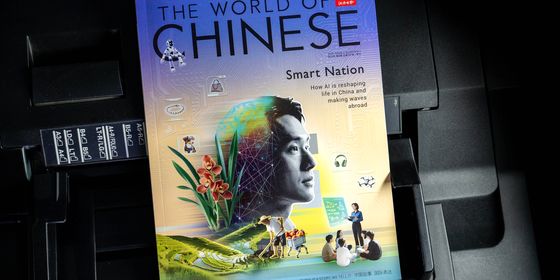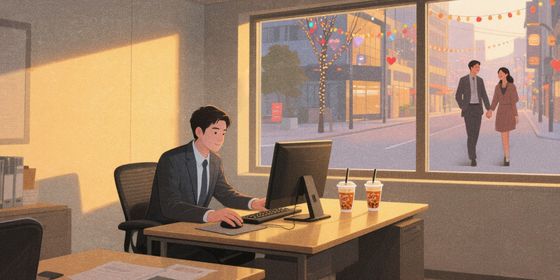Can young professionals change geriatric care in China, or will it change them first?
If it were up to Tang Yongqi, rollercoasters of the future would be fitted with straps for wheelchairs. “Amusement parks seem to be for young people only, but if we design them to better suit the elderly, maybe they would feel less awkward going there,” the 25-year-old designer tells TWOC, “and then maybe we can all have fun together.”
Tang works at So Young, a Chengdu-based startup trying to revolutionize the care of seniors in China. The roller coaster is part of her new conceptual project: a series of illustrations that express how young people imagine the future of geriatric care, or gerontology. “But maybe we can actually build it,” says Zhou Hang, So Young’s 31-year-old co-founder, “when we have the money.”
Currently, So Young operates a government-built senior home in collaboration with a local medical team in the city of Ya’an, about 130 kilometers west of Chengdu, while also putting out social media content and holding exhibitions on new ideas in elderly care. For the home’s 60 or-so residents, daily life may not include hair-raising (or denture-shaking) amusement park rides yet, but it still seems unorthodox to the general public. Traditionally, senior homes in China conjure up an image of subdued tranquility, where lackluster routines fill up residents’ days as they wait for the next visit from their children.
But a video introducing So Young on media platform Yitiao last November shows youngsters in their 20s, including Tang, dancing, laughing, swapping clothes, and putting on glamorous fashion photo shoots with their silver-haired clients. Zhou explains to TWOC that they only hold these activities once in a while in this otherwise conventional facility. But the video still captured more than 100,000 views, with many young netizens commenting they want to “reserve a spot” for when they retire.
Young folks bringing new ideas to gerontology gives the public hope, especially given the reality of China’s aging society and the field’s desperation for young talent. Many young people like Zhou and Tang enter the profession, willfully or serendipitously, with aspirations to innovate, contribute to society, or find better attitudes toward life. But the field is full of challenges, some even touching on heavy topics—like equality, life and death, and dignity—which sometimes catch the young workers unprepared.
According to a National Health Commission report, by the end of 2021, China’s population of over 65-year-olds surpassed 200 million, meaning that for every 100 working age adults there were 20.8 seniors to take care of. That year, the worldwide ratio was only 15 to 100 on average, according to the World Bank.
The same report mentions there are only about 322,000 registered geriatric care workers in the country, far too few to serve the 8.14 million spots in residential facilities nationwide. Gerontology-related majors have mushroomed, offered in over 200 colleges and universities as of 2021—a sign that preparation for elder care professionals in the country is on the “fast track,” as China Society News, an affiliate of the Ministry of Civil Affairs, interpreted in an article last year. In Beijing and in eastern China’s Zhejiang province, college graduates can receive government subsidies for becoming geriatric caregivers.
Zhou tells TWOC she was “accidentally led down this path” when, in 2016, her best friend (and now the company’s co-founder) Dai Jialin dragged her along to check out senior centers for Dai’s grandfather, who was suffering the aftermath of a stroke. “When the caregivers helped the elders roll over, they handled them like objects,” Zhou remembers the grim scenes. The pair decided to create their own center, one where they could see themselves living in their old age.
But skeptics of this venture are as vocal as proponents. Prior to starting their business, Dai was studying material sciences in Melbourne, and Zhou had just gotten her masters degree in Museum Studies from New York University—neither had a clue about gerontology. “Our activities might not be a 100 percent fit to the elders’ preference,” Zhou admits, as some netizens question whether it’s actually appropriate to make the residents’ lives “so exciting everyday.”
“But they can at least try them,” Zhou counters. If the residents only have access to stereotypical senior fun, like mahjong or routine exercises, she says, then they wouldn’t be able to figure out their own interests, let alone have a voice. At So Young, one woman in her 80s still likes to dribble basketball, another grandma loves showing off new outfits, and a grandpa manipulates his electric wheelchair like a race car.
“Elderly-friendly” has become a popular catchphrase in recent years, with multiple national policies calling for technological, architectural, and service designs suitable for the aging population—for example, enlarged captcha on websites, and handles in public bathrooms stalls. “But if you over-emphasize ‘elderly,’ you might limit them and hurt their self-esteem,” cautions Liu Yi, a former social worker who now runs several rural facilities under her brand Tongyue Elderly Care in Chongqing in southwestern China, and occasionally gives lectures to college students studying elder care.
“Sometimes the media look at senior citizens with sympathy, as a homogenous vulnerable group reliant on care and protection,” says Zhou. “I think it’s a bit condescending.”
Elder care centers have a relatively short history in China. Traditionally, multiple generations of a family lived under the same roof, and children were expected to care for parents in their old age.
During the socialist era in the 1950s, the number of senior homes nationwide grew from 923 to 150,000, mostly in rural areas as basic social welfare safety nets. They most often housed disabled senior citizens or those without a family to care for them. In the late ’90s national policies began to sound the alarm about population aging, and care centers finally turned to a market with more diverse demands.
But even nowadays, many people “look down upon senior homes because their impressions are still coming from old rural senior homes where the environment was sad and services subpar,” explains Liu. “White walls, black roofs, a lifeless scene of twilight years.”
“Some young people even think old folks are just taking up our societal resources,” Zhou adds, “but in fact, we are learning so much from these elders.”
An education in life (and death)
In early 2017, Xiong Yue, a now 29-year-old nurse who has worked in a hospital in Japan and a public senior home in Ziyang, a small city between Chengdu and Chongqing, had just passed the exam to become a registered nurse in Japan, but was still rough with her skills. During her internship at a hospital’s senior ward, she was sent to insert the IV needle for a female resident. “The patient said, ‘It’s OK, no matter how many times you have to try, I won’t blame you. If you need to practice, you can come to me everyday.’”
In the lobby of her Ziyang apartment, Xiong recalls the elderly woman’s words to TWOC slowly and carefully, as if handling a cherished delicate object. Xiong went back every day, but “she never complained about anything. Only encouragement,” she says.
Not much later, the patient passed away. The next morning, Xiong arrived at work unwarned, ready to put in the needle for her again, only to find an empty ward. “I just broke into tears…” Xiong takes a pause. “It was the first time I cried at work.”
The more she works in elderly care, “the more I became fearful of death,” Xiong says, explaining that when she used to work as a nurse in the emergency room, three or four patients might die in the ward every night, but she wouldn’t have time to think. But every time a senior resident passes away, “It’s more than life and death. It’s also about bonds and emotions.…I’m just afraid of saying goodbyes.”
When it comes to the topic of death, even a degree in gerontology can leave one unprepared. Cai Dingxiu studies geriatric services and management at Chongqing Preschool Education College. In school, she says, sometimes students are taught to treat their clients as family in order to provide better care, but sometimes they’re advised against it, “because you end up too sad when they pass.”
Just a month ago, 22-year-old Cai encountered her first farewell one week into her internship at a branch of Tongyue Elderly Care, the brand founded by Liu Yi. “I didn’t smile that whole day,” Cai says. Liu, Cai’s supervisor, counselled her after the fact. “In social work, there is a ‘phase of emotional detachment,’ but it’s not practical for elderly care,” Liu explains to TWOC. This is because with elders, the worker doesn’t know when the separation is going to happen. “You can only adjust.”
Liu herself is only 31 years old, and faced much distrust from the local civil affairs bureaus when she set up her centers. “Because we are young, they didn’t believe we had real experience on the ground.” But Liu has been working with the elderly since she graduated in 2013, first as a social worker, then at an urban senior home, before setting up her own rural projects in 2018.
When she first started working at the high-end urban senior home in 2016, she estimates that at most 10 percent of the staff were in their 20s, and “that was already a lot for the industry.” She now sees more young people in elder care centers, but a 2020 article by CCTV News presented a different picture, with the facilities the reporter visited having staff that were mostly middle-aged or elderly themselves.
Liu has staffed her three rural project sites with a rotating team of eight “post-00s” interns, whom she hopes to groom into full time staff. On TWOCs visit to Liu’s Tongyue branch at Beizhai village in Chongqing, four interns including Cai are busying around. Cai and a young man are playing hot potato with a circle of residents to a 2004 mandopop hit. Another young woman does her rounds on the floors, joking with a quiet old man in local dialect, “Grandpa, how many cigarettes today already?” “Sometimes, residents find orders from these ‘little kids’ less threatening [than from older caregivers],” says Liu.
A long-term option for the young?
While Zhou stumbled upon gerontology, Cai was determined to study it upon graduating high school, as she “wanted to know how to take care of my own family.” For Xiong, it was a deep connection with her first patient, a Japanese lady in her 80s named Shizuko, who used to stuff Xiong’s bag with oranges and congratulate her on her improving Japanese.
Most of these young professionals boast of “openminded” support from their parents, but Xiong remembers a relative who asked her mother-in-law in disbelief, “Xiong Yue is a pretty girl. What is she doing working in such a place?”
Liu, on the other hand, sees stigmatized senior homes in rural areas as a neglected field where small innovations can have huge positive impacts on the residents’ quality of life. Nowadays, she travels for more than two hours almost everyday from her home in urban Chongqing to various program sites.
For Xiong, however, the sense of segregation surrounding senior homes eventually became unbearable under strict Covid-19 pandemic controls in 2022. She was in on-and-off lockdowns at a public senior home in Ziyang that spanned a whole year starting when her daughter was only 7 months old, which means she had to pump bottles of milk to send home everyday. “When I returned home, she didn’t even want to feed on my breasts anymore.” Xiong became so consumed by sadness and anxiety, as well as mastitis, that at one point she started losing sleep.
Most of China opened up at the end of 2022, but pandemic controls only became stricter for senior homes as the virus spread. “They even put plastic films on some doors and windows to make sure residents wouldn’t get infected by visitors.” Finally, when all of Xiong’s family were infected with Covid, with her daughter wailing in pain at 1 or 2 a.m. one morning, she finally decided it was not worth it. She quit her job in February this year.
While some elderly residents settle into a stable final phase of life, the young workers are at a point where family, personal growth, and career are all in flux. Zhou wants So Young to focus more on content creation—more interactive exhibitions on the idea of an “agelessness” society, more social media posts about young people working in the field—while also looking for a new site where they can design a senior center from scratch with less limitations. This means the team might have to say goodbye, for now, to the residents at their Ya’an project site.
In Zhou’s ideal, a senior home should be a full fledged ecosystem with no barriers from the rest of the society. “Some question whether our designs are for the young or the old. Why can’t they be for both?” She says. Sometimes when families visit, she notes, they could barely find anything to talk about. “If we make young people willing to go, then we can create an intergenerational space.”
Many senior care centers are unwilling or unable to change to a more open style, for a lack of protection against risk. In China, often the decision to put an elder in a care center is not made by the seniors themselves, but by the whole family, which means even when care centers want to respect residents’ wishes, there are multiple stakeholders to answer to.
Zhou is feeling the pressure of having to helm the company’s transition while keeping it financially afloat. “But I’m already crying less [from stress] than when we first started,” she says. Part of that is thanks to hanging out with wiser folks, she believes. “If we stretch out the timeline, life is so full of unexpected turns. No need to clutch onto plans and comparisons…I’m in no shape to lecture, but maybe we should all try not to be so hung up on work, and enjoy our normal life.”
The Future of China’s Elderly Care is Young is a story from our issue, “After the Factory.” To read the entire issue, become a subscriber and receive the full magazine.








